Japan, a captivating blend of ancient traditions and modern marvels, offers an abundance of unforgettable experiences for every traveler.
From bustling cities and serene temples to breathtaking natural landscapes and vibrant cultural festivals, Japan is a destination that never ceases to amaze.
Join us as we unveil the 25 best places to visit in Japan, each a unique and captivating destination that will leave you with lasting memories of this extraordinary country.
- Recommended BEST Tours in Japan (FREE Cancellation)
- Recommended BEST Tours in Tokyo
- Recommended BEST Tours in Osaka
- Recommended BEST Tours in Kyoto
- Recommended Tokyo Hotels
- Recommended Osaka Hotels
- Recommended Kyoto Hotels
- Cheap Flights, Airline Tickets & Plane Tickets (TRIP.COM)
Number 25: Kenrokuen Garden, Kanazawa.
Kenrokuen Garden, a jewel of Kanazawa, is a testament to the artistry and refinement of Japanese landscaping. Revered as one of Japan’s Three Great Gardens, it beckons visitors with its meticulously designed landscapes, tranquil ponds, and harmonious natural and artificial elements blend.
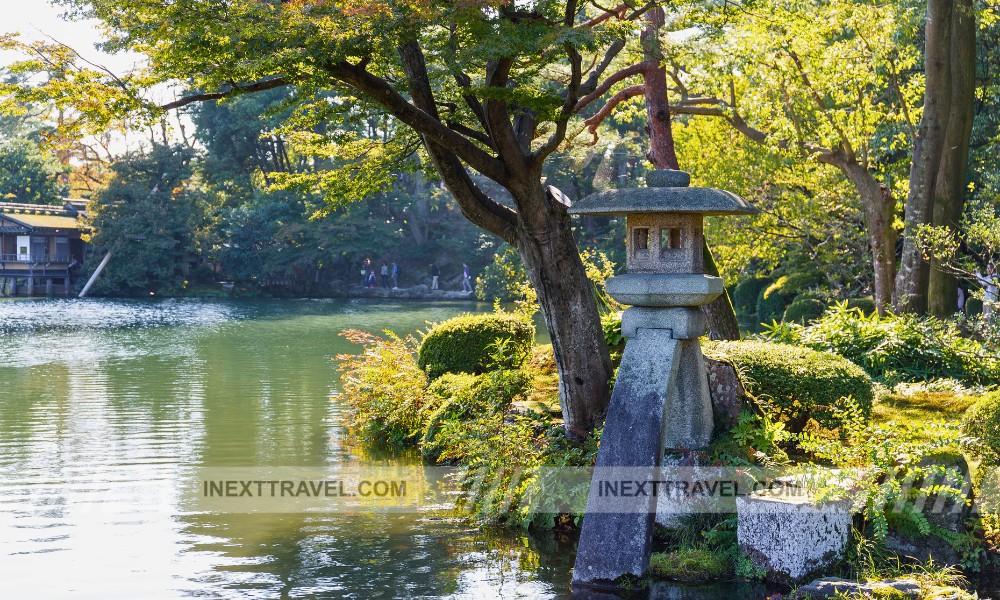
As you enter Kenrokuen, prepare to be transported to a world of tranquility and beauty. Wander along winding paths that meander through meticulously manicured gardens, each season offering a unique and captivating display. In spring, cherry blossoms paint the landscape in soft pink hues, while autumn emits fiery red and gold foliage.
The garden’s centerpiece is Kasumigaike Pond, a large, tranquil body of water that reflects the surrounding landscape like a mirror. Admire the elegant Kotojitoro Lantern, a stone lantern with two legs that appears to float on the water, and stroll across the picturesque Seisonkaku Villa. This traditional Japanese building offers stunning views of the garden.
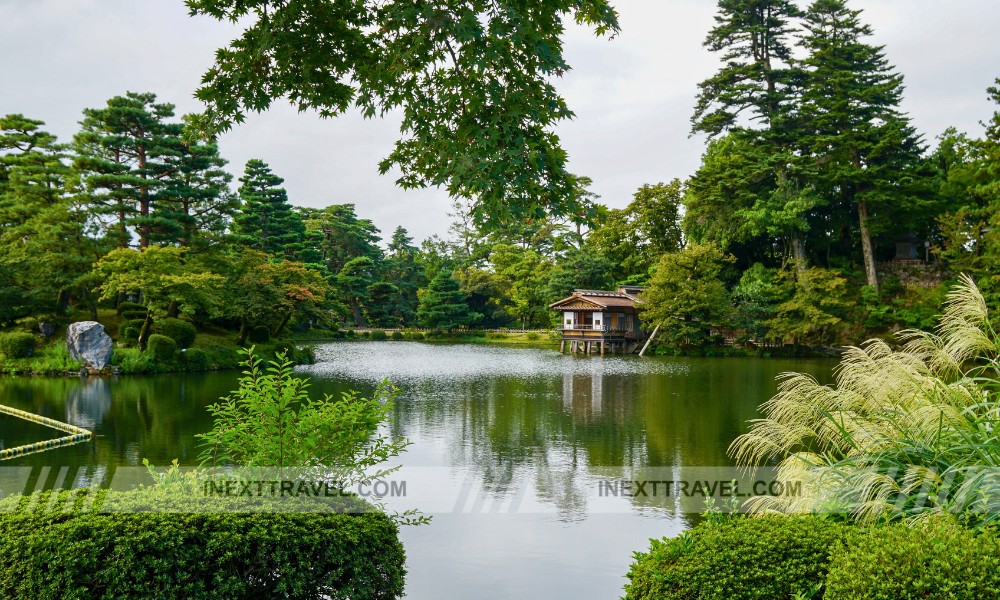
Throughout Kenrokuen, you’ll encounter a variety of charming tea houses where you can pause for a moment of reflection and enjoy a cup of matcha tea and traditional Japanese sweets. The tea ceremony, a ritual steeped in history and culture, is a perfect way to experience the essence of Japanese hospitality.
Kenrokuen Garden is a masterpiece of landscape design that has evolved over centuries, with each generation of gardeners adding their unique touch. From the meticulously pruned pine trees to the carefully placed stone lanterns and bridges, every garden element has been thoughtfully considered to create a harmonious and visually stunning environment.
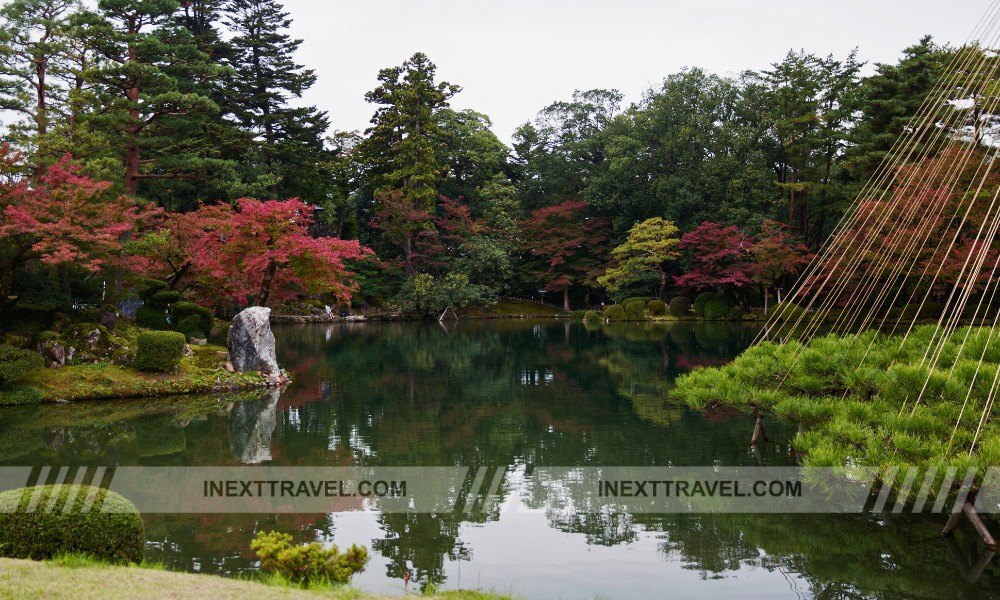
Whether you’re a nature enthusiast, a photography enthusiast, or simply seeking a peaceful retreat, Kenrokuen Garden is a must-visit destination in Kanazawa. Its timeless beauty, serene atmosphere, and rich cultural heritage will leave you with lasting memories of this enchanting garden.
Number 24: Himeji Castle (Places To Visit in Japan)
Himeji Castle, a majestic symbol of Japan’s feudal past, is a testament to the country’s architectural ingenuity and military prowess. Often referred to as the “White Heron Castle” for its elegant white facade and graceful silhouette, this UNESCO World Heritage Site is a true masterpiece of Japanese castle architecture.
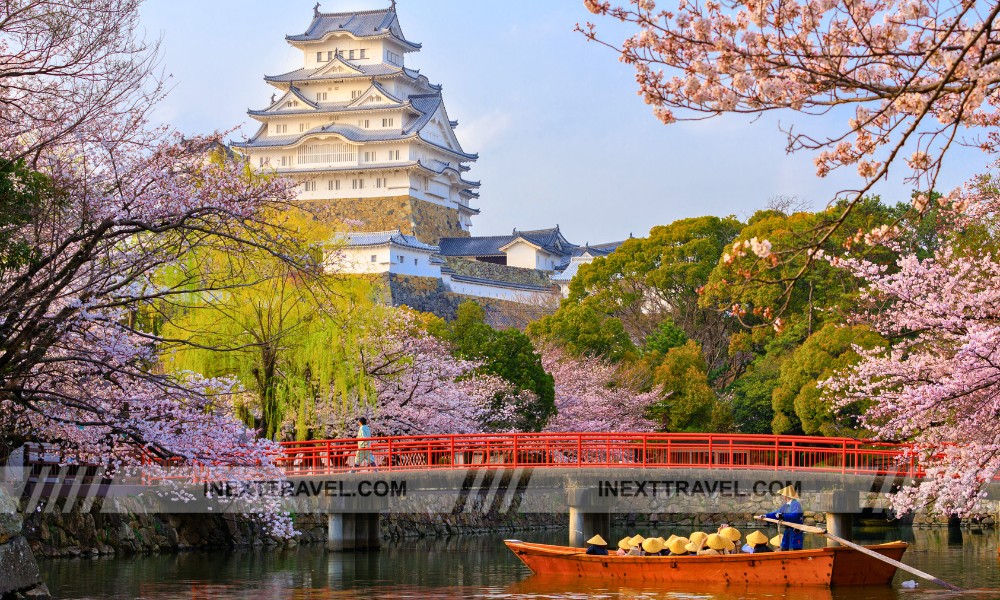
As you approach the castle, its imposing presence is undeniable. The towering main keep, surrounded by a network of smaller towers, walls, and gates, creates a formidable defensive complex. The castle’s exterior, with its white plaster walls and sweeping roofs, exudes elegance and sophistication.
Step inside the castle grounds and prepare to be transported back in time. Explore the intricate maze of corridors, passageways, and hidden rooms, each designed with strategic defense in mind. Marvel at the ingenious architectural features, such as hidden loopholes for archers, stone-dropping windows, and steep staircases designed to disorient attackers.
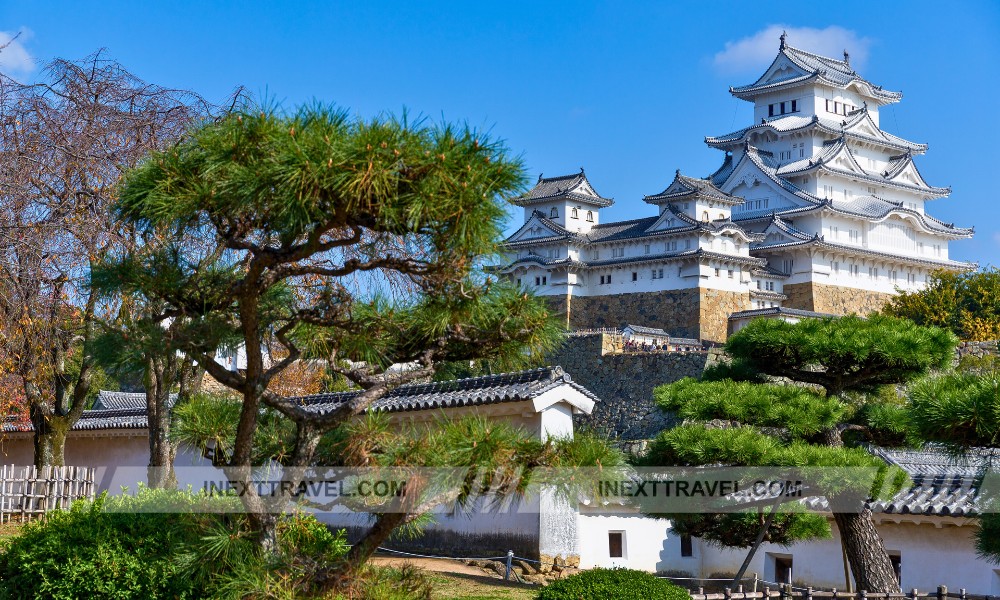
As you ascend the main keep, the views become increasingly breathtaking. You’ll be rewarded from the top with panoramic vistas of the surrounding city and countryside, a reminder of this castle’s strategic importance in its heyday.
The castle’s interior is equally impressive, with its spacious tatami-mat rooms, ornate sliding doors, and painted screens. Learn about the castle’s history and the samurai who once lived and worked within its walls.
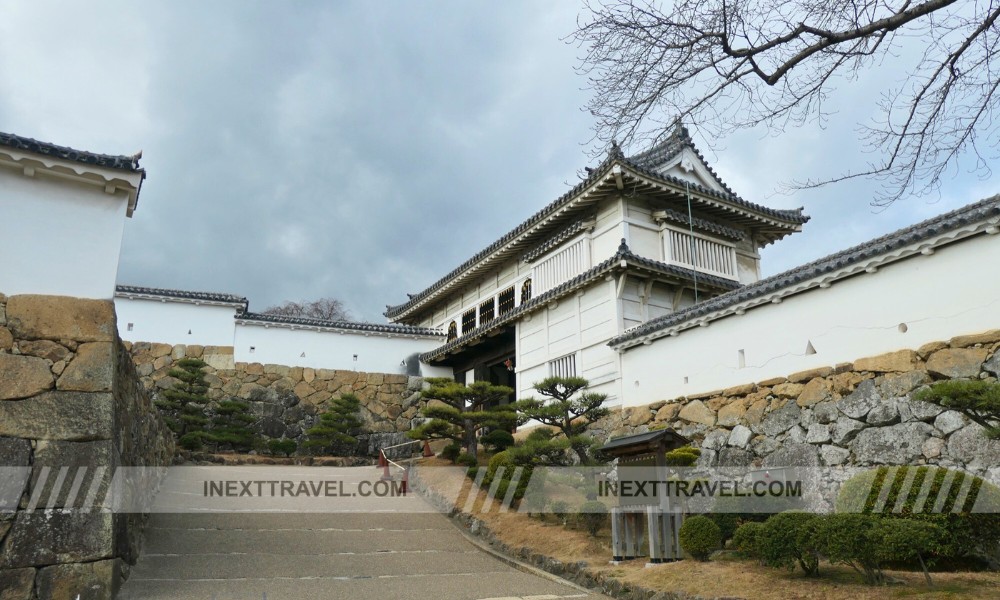
Himeji Castle is not just a historical monument; it’s a living testament to Japan’s rich cultural heritage. Its timeless beauty, intricate design, and historical significance make it a must-visit destination for anyone exploring Japan.
Number 23: Nara Park.
Nara Park, a sprawling oasis in the heart of Nara, intertwines nature, history, and spirituality. It’s a park like no other, where over 1,000 sika deer roam freely, adding an element of magic and charm to the experience. These gentle creatures, considered sacred messengers of the gods, are accustomed to human interaction and often approach visitors hoping to receive a treat.
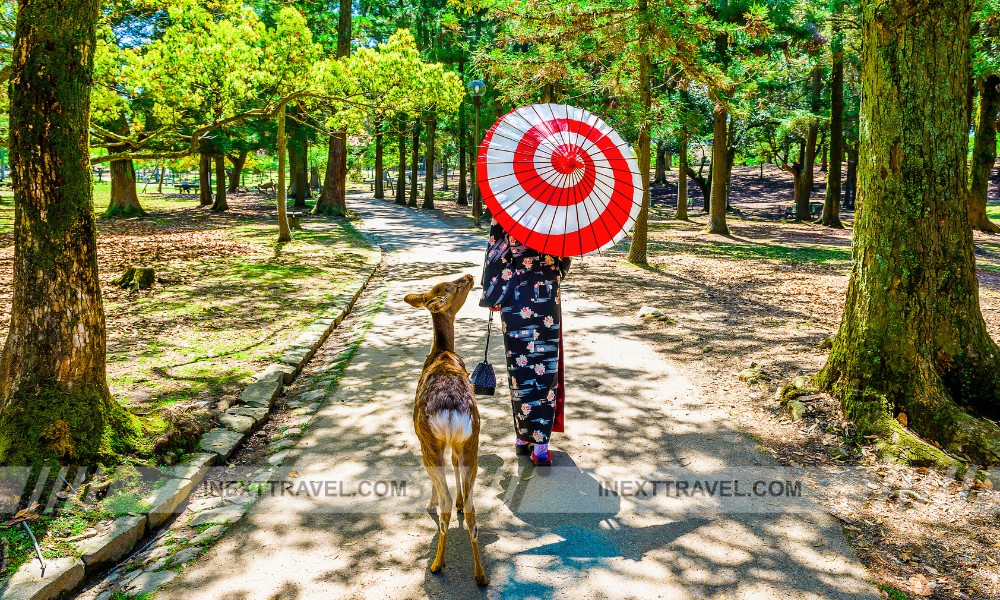
As you wander through the park’s expansive grounds, you’ll be captivated by its natural beauty. Lush forests, tranquil ponds, and rolling meadows create a serene atmosphere, inviting you to slow down and connect with nature. The park’s centerpiece is Todai-ji Temple, a UNESCO World Heritage Site and one of the most significant wooden buildings in the world. Inside, you’ll find the Daibutsu, a colossal bronze statue of Buddha that is a testament to Nara’s rich Buddhist heritage. The sheer scale of this statue is awe-inspiring, leaving visitors with a sense of reverence and wonder.
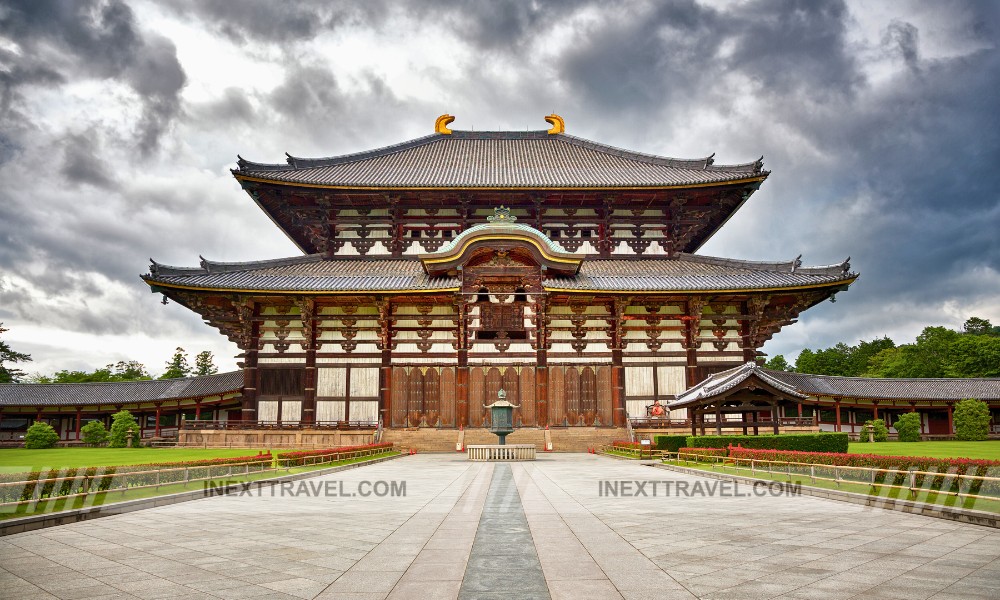
Another must-visit destination within Nara Park is Kasuga Grand Shrine, a Shinto shrine renowned for its thousands of stone and bronze lanterns. These lanterns, donated by worshippers over centuries, create a mesmerizing spectacle, especially when illuminated at night. The shrine’s serene atmosphere and enchanting surroundings make it a perfect place for quiet contemplation and spiritual reflection.

Nara Park uniquely blends natural beauty, cultural significance, and spiritual tranquility. Whether you’re feeding the friendly deer, exploring ancient temples, or simply enjoying a peaceful stroll through the park’s picturesque landscapes, Nara Park is a destination that will leave you with lasting memories of its enchanting charm.
Number 22: Hiroshima Peace Memorial Park and Museum.
The Hiroshima Peace Memorial Park and Museum stands as a solemn testament to the devastating events of August 6, 1945, when the world witnessed the horrors of nuclear warfare. This poignant memorial serves as a place of remembrance for the victims, a reminder of the devastating impact of the atomic bombing, and a beacon of hope for a future free from nuclear weapons.
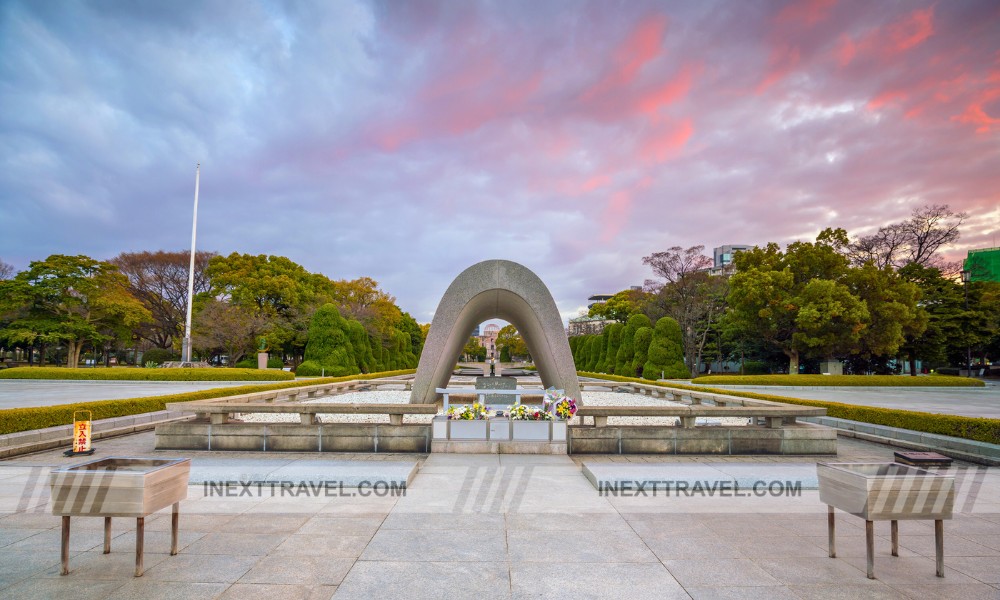
As you enter the park, you’ll be greeted by the skeletal remains of the Atomic Bomb Dome, a stark and haunting reminder of the destruction that occurred in Hiroshima. Originally an industrial promotion hall, the dome was one of the few structures left standing near the blast’s hypocenter. Today, it is a powerful symbol of resilience and the enduring human spirit.
The Hiroshima Peace Memorial Museum within the park offers a profoundly moving and informative experience. Through exhibits, photographs, artifacts, and personal testimonies, the museum tells the story of Hiroshima before, during, and after the bombing. Learn about the city’s vibrant history, the lives of those who perished, the long-lasting effects of radiation, and the ongoing efforts for peace and disarmament.
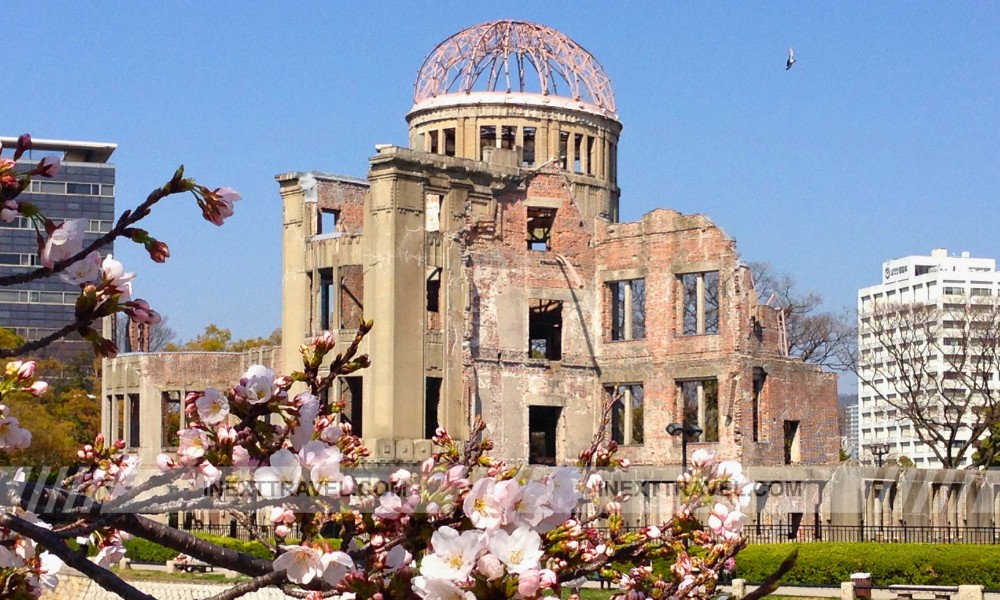
Stroll through the park’s serene gardens, where monuments and memorials pay tribute to the victims. The Children’s Peace Monument, adorned with thousands of origami cranes, is a poignant reminder of the innocent lives lost. The Peace Flame, burning continuously since it was lit in 1964, symbolizes the hope for a world without nuclear weapons.
The Hiroshima Peace Memorial Park and Museum are not just a place of sorrow but also hope. They serve as a reminder of the importance of peace, understanding, and reconciliation. By learning about the past, we can strive for a future where such atrocities never happen again.
Number 21: Dotonbori, Osaka.
Prepare to be dazzled by the vibrant energy of Dotonbori, Osaka’s iconic entertainment district. This bustling hub is a feast for the senses, where neon lights illuminate the night, crowds of people throng the streets, and the air is filled with the tantalizing aroma of street food.
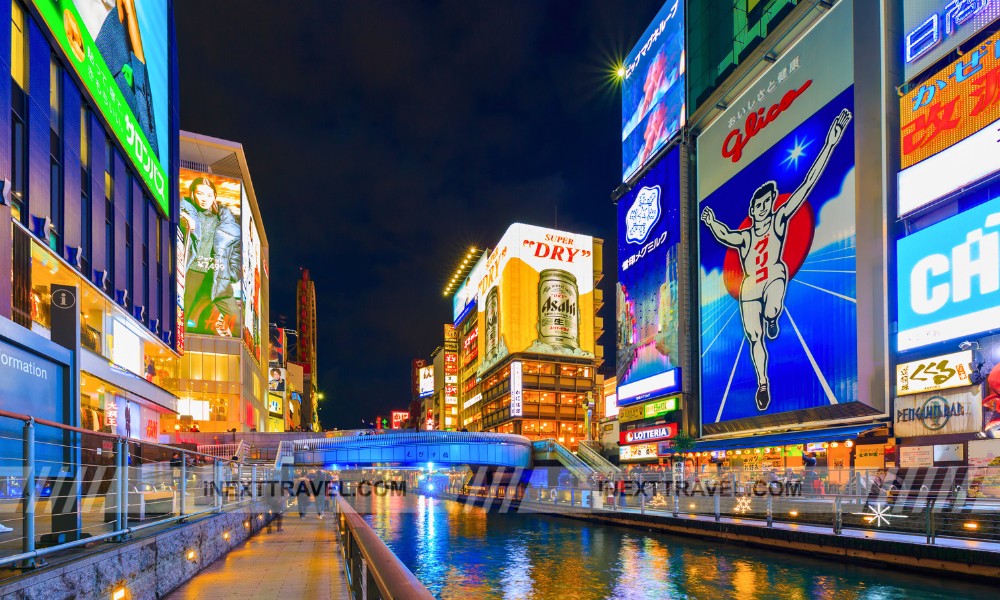
Dotonbori’s streets are lined with endless restaurants, shops, and entertainment venues, each vying for your attention with flashing lights and animated displays. The iconic Glico Running Man sign, a symbol of Osaka, towers over the canal, welcoming visitors to this energetic neighborhood.
But Dotonbori is not just a spectacle for the eyes; it’s also a culinary paradise. The district is renowned for its mouthwatering street food, a tempting array of flavors and textures that will satisfy any craving. Sample takoyaki, delicious octopus balls filled with savory batter and topped with tangy sauces and dancing bonito flakes. Indulge in okonomiyaki, a savory pancake made with cabbage, meat, or seafood, grilled to perfection, and smothered in okonomiyaki sauce, mayonnaise, and aonori seaweed flakes.
Beyond takoyaki and okonomiyaki, Dotonbori offers a plethora of other culinary delights. Slurp down steaming bowls of ramen, savor the delicate flavors of sushi, or try kushikatsu, deep-fried skewers of meat, vegetables, and seafood. For those with a sweet tooth, there are plenty of tempting treats, from fluffy taiyaki (fish-shaped cakes filled with sweet red bean paste) to colorful mochi ice cream.

Dotonbori is not just a place to eat; it’s a place to experience the vibrant heart of Osaka. Stroll along the canal, take a boat ride, or soak up the lively atmosphere. Whether you’re a foodie, a night owl, or merely seeking a taste of Japanese culture, Dotonbori is a destination that will leave you energized and enthralled.
Number 20: Shibuya Crossing, Tokyo.
Get ready to dive into the heart of Tokyo’s vibrant energy at Shibuya Crossing, an iconic intersection that embodies the city’s fast-paced and dynamic spirit. Known as the world’s busiest pedestrian scramble, Shibuya Crossing is a spectacle unlike any other, where thousands of people converge from all directions, creating a mesmerizing ballet of organized chaos.
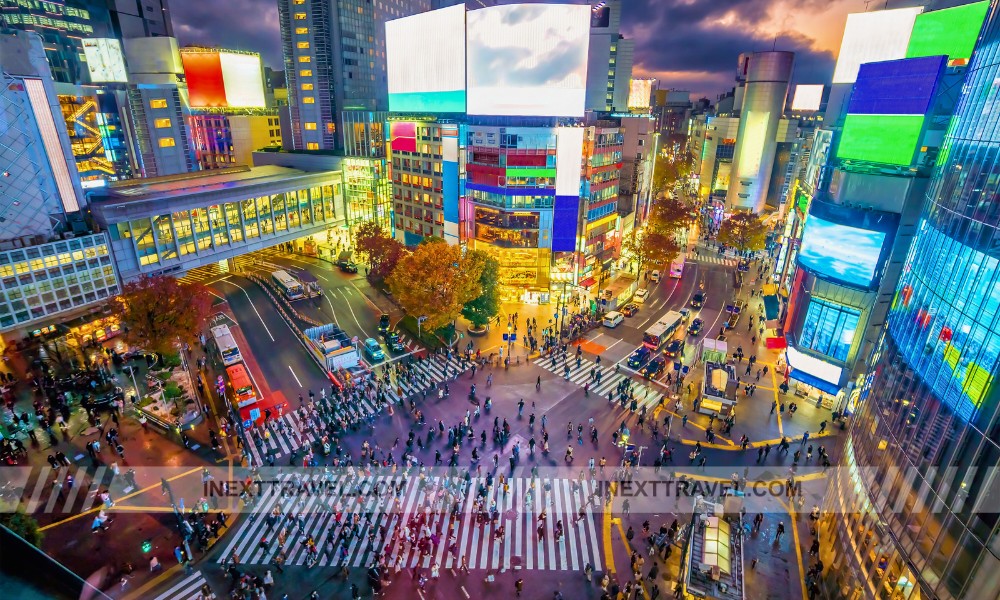
As the traffic lights turn red and the iconic “scramble” signal illuminates, a sea of humanity floods the intersection. People of all ages and walks of life, from stylish teenagers to suited business people, move in a seemingly synchronized flow, weaving through each other with remarkable efficiency. The scene is a testament to the Japanese culture of orderliness and respect, even amidst the seeming chaos.
The surrounding cityscape adds to the electrifying atmosphere. Towering video screens flash advertisements, neon signs pulsate with color, and the sounds of the city create a symphony of urban life.

Witnessing the Shibuya scramble is a truly unforgettable experience. It’s a microcosm of Tokyo’s fast-paced energy, where tradition meets modernity and individual paths intersect in a harmonious dance.
But Shibuya Crossing is more than just a pedestrian crossing; it’s a cultural phenomenon. It has been featured in countless films and television shows, becoming an iconic symbol of Tokyo. It’s a place where memories are made, strangers become part of a shared experience, and the city’s pulse can be felt most vividly.
Number 19: Fushimi Inari-taisha Shrine, Kyoto.
Get ready to be awestruck by the sheer beauty and spiritual energy of Fushimi Taisha Shrine, an iconic destination in Kyoto that will leave you mesmerized. This Shinto shrine, dedicated to Inari, the god of rice and prosperity, is renowned for its thousands of vibrant vermilion torii gates, which create a seemingly endless tunnel winding through a lush forest.
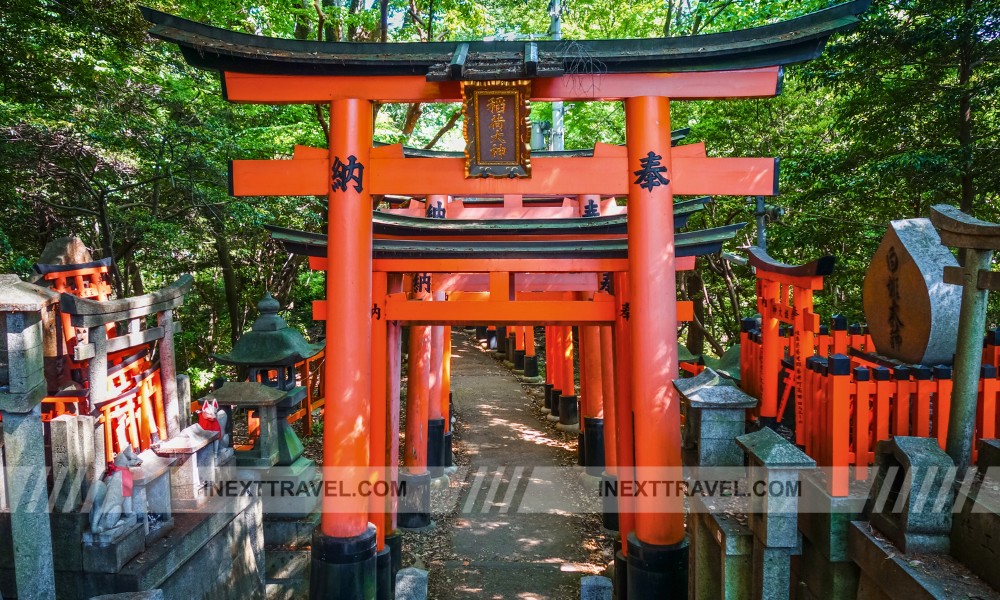
As you enter the shrine grounds, you’ll be greeted by the imposing Romon Gate, a grand entrance that marks the beginning of your journey. From there, follow the path as it meanders through the forest, each step leading you deeper into a world of tranquility and wonder. The torii gates, donated by individuals and businesses over centuries, create a mesmerizing visual spectacle, their vibrant red contrasting beautifully with the lush greenery.
As you hike further up the mountain, the path becomes steeper, and the crowds thin out, but the rewards are even more significant. Along the way, you’ll encounter smaller shrines, statues of foxes (Inari’s messengers), and serene bamboo groves. The air is filled with rustling leaves and the gentle clanging of prayer bells, creating a truly immersive experience.
The hike to the summit of Mount Inari is a rewarding challenge, but the panoramic views of Kyoto that await you at the top are worth every step. From this vantage point, you can see the entire city sprawled before you, its temples, shrines, and traditional wooden houses nestled amongst the surrounding hills. It’s a sight that will take your breath away and leave you with a profound sense of awe and appreciation for Kyoto’s timeless beauty.
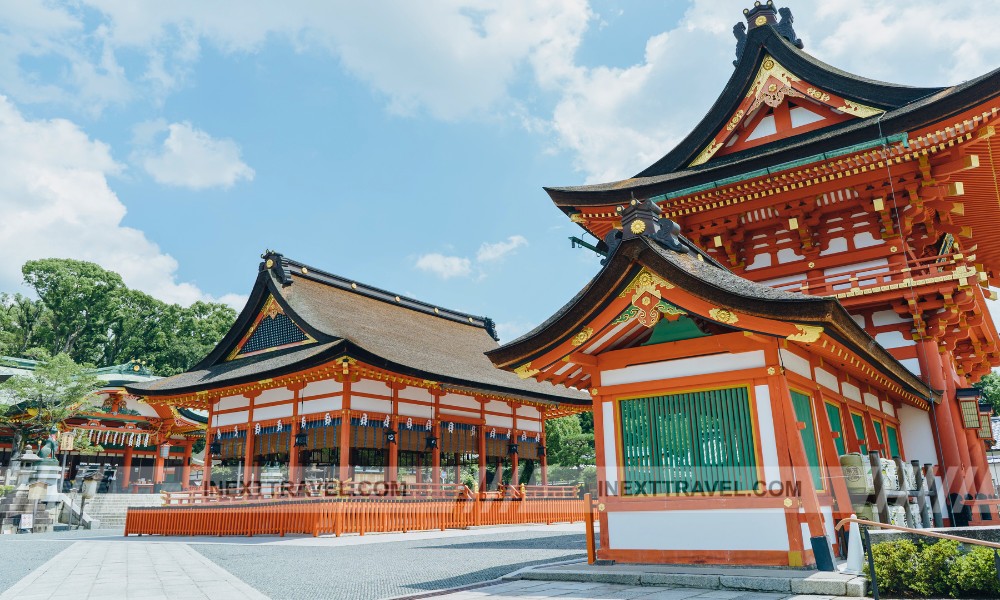
Fushimi Inari-taisha is more than just a shrine; it’s a spiritual journey where you can connect with nature, history, and tradition. Whether you’re seeking a challenging hike, a peaceful escape from the city, or a glimpse into Japan’s rich cultural heritage, this iconic shrine is a must-visit destination that will leave a lasting impression.
Number 18: Kinkaku-ji (Golden Pavilion), Kyoto.
Prepare to be mesmerized by the ethereal beauty of Kinkaku-ji, also known as the Golden Pavilion, a Zen Buddhist temple that gleams like a jewel in the heart of Kyoto. This iconic landmark is renowned for its glorious exterior, entirely covered in gold leaf, which reflects the surrounding landscape and creates a breathtaking sight that has captivated visitors for centuries.
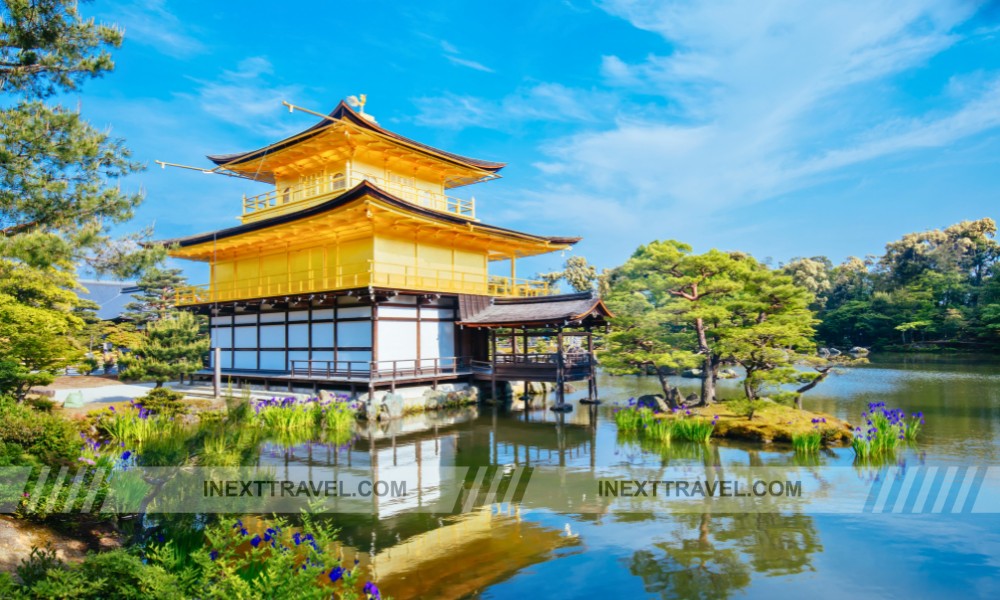
As you approach the temple, its golden facade shimmers in the sunlight, glowing warmly on the surrounding gardens and ponds. The temple’s elegant design, with its three distinct floors, each representing a different architectural style, is a testament to the refinement and artistry of Japanese craftsmanship.
The first floor, known as the Shinden-zukuri style, reflects the Heian period’s aristocratic elegance with its natural wood columns and white plaster walls. The second floor, built in the Bukke-zukuri style, showcases the samurai aesthetic of the Muromachi period, with its sliding doors and tatami floors. Finally, the third floor, designed in the Zen style, is a simple and austere space for meditation and contemplation.
The temple’s reflection in the calm waters of Kyokochi Pond creates a mesmerizing illusion as if the Golden Pavilion is floating in a mirror. The surrounding gardens, meticulously landscaped with pine trees, moss-covered rocks, and flowing streams, provide a serene and contemplative atmosphere.
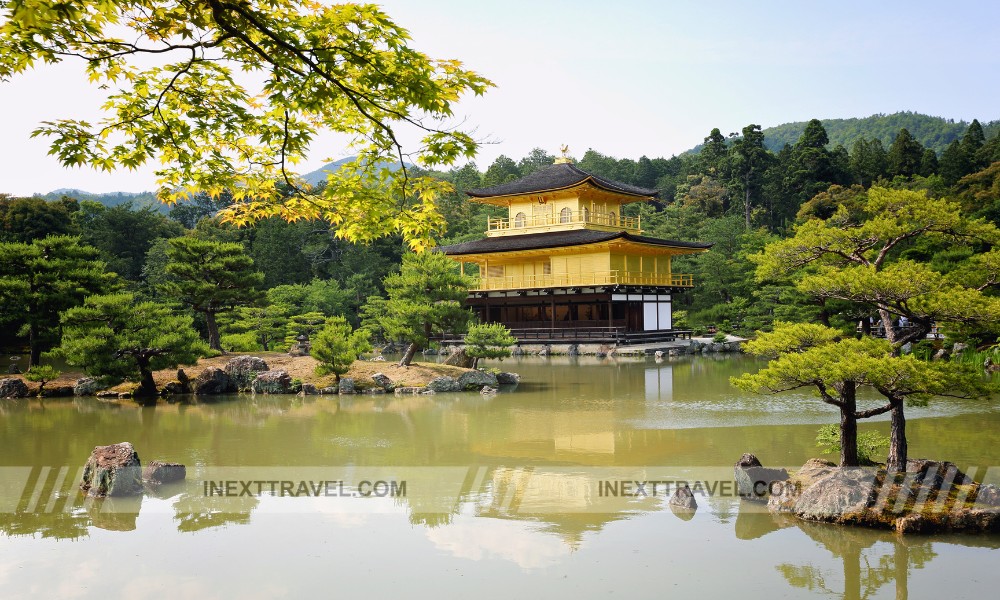
Kinkaku-ji is not just a feast for the eyes; it’s also a place of spiritual significance. Originally built as a retirement villa for a shogun, it was later converted into a Zen temple. As you wander through the temple grounds, you’ll feel a sense of tranquility and peace, a testament to the enduring power of Zen Buddhism.
Whether you’re a spiritual seeker, an architecture enthusiast, or simply a beauty lover, Kinkaku-ji is a must-visit destination in Kyoto. Its golden radiance, harmonious design, and serene atmosphere will leave you with a lasting impression of Japan’s rich cultural and spiritual heritage.
Number 17: Arashiyama Bamboo Forest, Kyoto.
Escape the bustling city and immerse yourself in the serene beauty of the Arashiyama Bamboo Grove, a natural wonder that exudes tranquility and magic. Located in the Arashiyama district of Kyoto, this enchanting forest is a must-visit destination for nature lovers and those seeking a peaceful escape from the urban hustle.
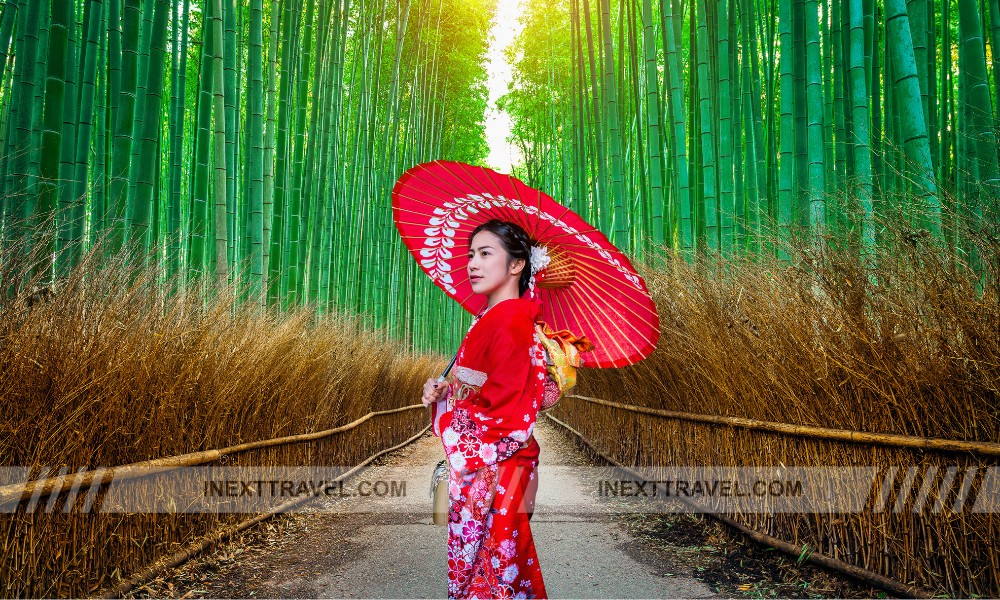
As you enter the grove, you’ll be enveloped by a sea of towering bamboo stalks that sway gently in the breeze, their leaves rustling softly overhead. The sunlight filters through the dense canopy, creating a mesmerizing interplay of light and shadow that dances on the forest floor. The air is filled with the soothing sounds of nature, a symphony of chirping birds, rustling leaves, and the gentle creaking of bamboo.
The path through the grove winds through this verdant wonderland, inviting you to wander and explore at your own pace. Take a moment to pause and appreciate the beauty that surrounds you. Admire the intricate patterns of the bamboo bark, feel the cool air on your skin, and listen to the forest’s whispers.
The Arashiyama Bamboo Grove is not just a place of natural beauty; it’s also a cultural landmark. The bamboo has been an integral part of Japanese culture for centuries, used for everything from construction and crafts to food and medicine. The grove is a testament to the enduring relationship between humans and nature, where you can connect with the natural world and appreciate its many gifts.

To reach the Arashiyama Bamboo Grove, take a short train ride from Kyoto Station to Saga Arashiyama Station. From there, the grove is a short walk away. The best time to visit is early morning or late afternoon when the crowds are smaller and the light is most magical.
Beyond the bamboo grove, Arashiyama offers a wealth of other attractions to explore. Visit the Tenryu-ji Temple, a UNESCO World Heritage Site, admire the Togetsukyo Bridge, or take a relaxing boat ride on the Hozugawa River. Whether you’re seeking tranquility, adventure, or cultural immersion, Arashiyama is a destination that has something to offer everyone.
Number 16: Tokyo Tower.
Ascend to new heights and behold the breathtaking panorama of Tokyo from the iconic Tokyo Tower. Once the tallest in Japan, this towering structure symbolizes the city’s post-war rebirth and technological progress.
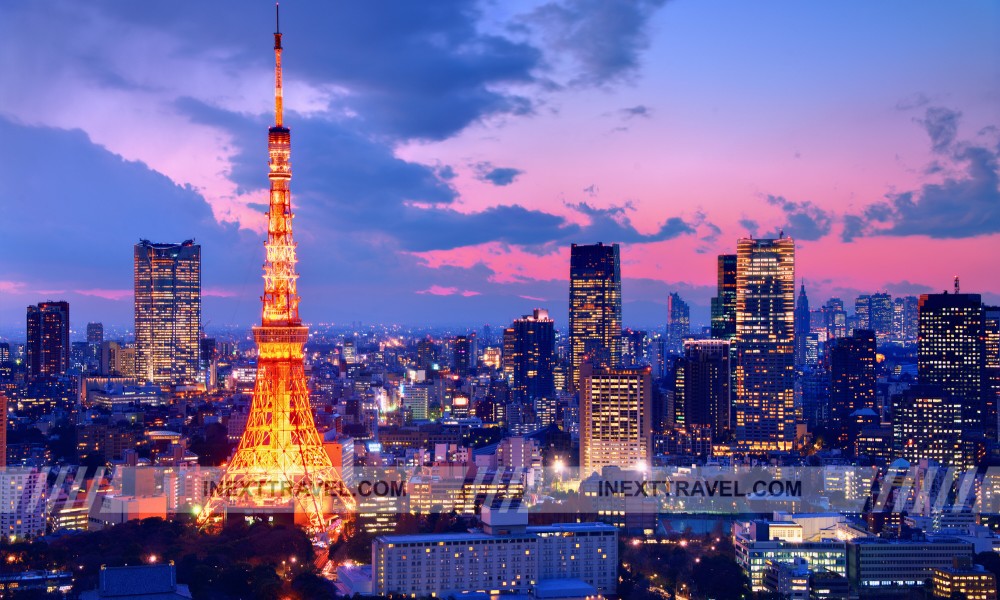
Ride the elevator to the main observatory at 150 meters, or venture even higher to the unique observatory at 250 meters for truly awe-inspiring 360-degree views of the sprawling metropolis. Gaze upon Tokyo’s iconic landmarks, like the Tokyo Skytree, the Imperial Palace, and the vibrant cityscape that stretches as far as the eye can see. You might even glimpse Mount Fuji looming majestically on clear days in the distance.
As the sun sets, Tokyo Tower becomes a luminous beacon, its orange and white lights illuminating the night sky. The tower’s nightly light shows are a spectacle, with different colors and patterns creating a mesmerizing display that adds to the city’s vibrant energy.

But Tokyo Tower is more than just an observation deck; it’s a destination. At the tower’s base, explore the FootTown complex, which includes shops, restaurants, and a museum dedicated to its history and construction.
Whether you’re a first-time visitor to Tokyo or a seasoned traveler, a trip to the top of Tokyo Tower is an experience not to be missed. It offers a unique perspective on the city’s vastness and complexity and a chance to witness its vibrant energy from above.
Number 15: Shinjuku Gyoen National Garden, Tokyo.
Amidst Tokyo’s urban sprawl, a tranquil sanctuary awaits Shinjuku Gyoen National Garden. This sprawling park, a former imperial garden, is a verdant oasis that offers a welcome respite from the city’s hustle and bustle.

Step inside Shinjuku Gyoen, and you’ll be transported to a world of serene beauty and diverse landscapes. The garden is a harmonious blend of three distinct styles: the elegant French Formal Garden with its manicured lawns and geometric flower beds, the English Landscape Garden with its rolling hills and picturesque ponds, and the traditional Japanese Garden with its serene ponds, koi fish, and tea houses.
Explore the meandering paths that wind through the gardens, discover hidden corners, and find a peaceful spot to relax and recharge. In spring, the park comes alive with the vibrant colors of cherry blossoms, while in autumn, the foliage transforms into a fiery spectacle of red and gold.
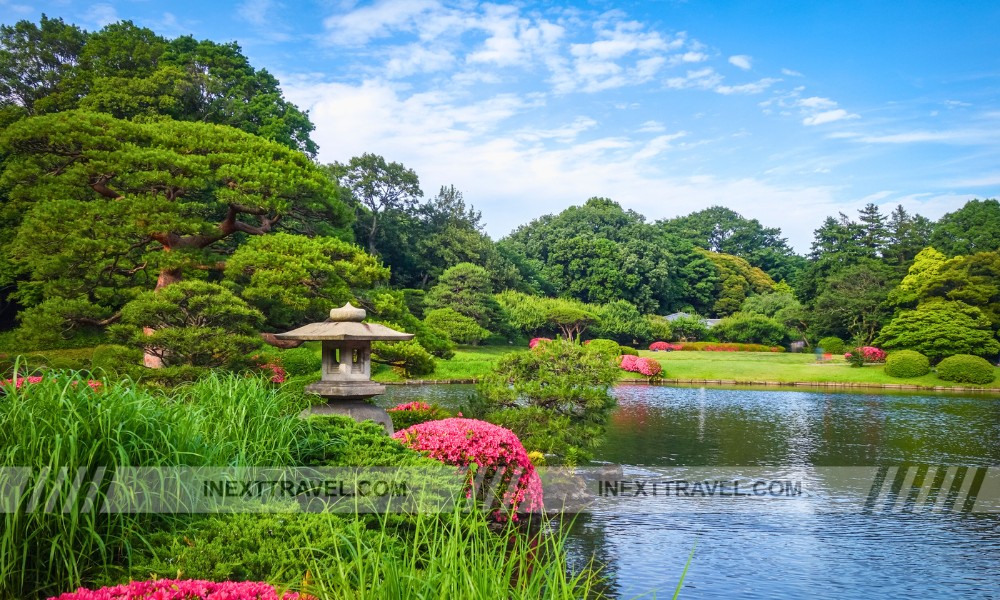
Beyond its natural beauty, Shinjuku Gyoen offers a variety of cultural attractions. Visit the Taiwan Pavilion, a traditional Chinese-style structure that houses a collection of Taiwanese artifacts, or the Greenhouse, which showcases diverse exotic plants.
Whether you’re seeking a tranquil escape from the city, a romantic stroll, or a place to connect with nature, Shinjuku Gyoen National Garden has something to offer everyone. It’s a place where you can slow down, breathe deep, and appreciate the beauty of the natural world in the heart of one of the world’s busiest cities.
Number 14: The Ghibli Museum, Mitaka.
We are calling all animation lovers and dreamers! Prepare to be transported into the enchanting world of Studio Ghibli at the Ghibli Museum, a whimsical wonderland nestled in the leafy suburb of Mitaka, Tokyo. This museum, designed by the legendary Hayao Miyazaki himself, is a testament to the studio’s creative spirit and dedication to storytelling.

As you enter the museum, you’ll feel like you’ve stepped into one of Ghibli’s beloved films. The building’s whimsical architecture, with its winding staircases, hidden nooks, and colorful stained glass windows, evokes a sense of childlike wonder and curiosity.
Inside, you’ll discover a treasure trove of exhibits celebrating the artistry and magic of Ghibli’s animated films. Explore the intricate details of the characters and settings, learn about the animation process, and discover the inspiration behind some of your favorite scenes.
Don’t miss the special exhibitions that rotate throughout the year, showcasing different aspects of Ghibli’s work. You might encounter original sketches, storyboards, and even life-size replicas of iconic characters like Totoro and the Catbus.
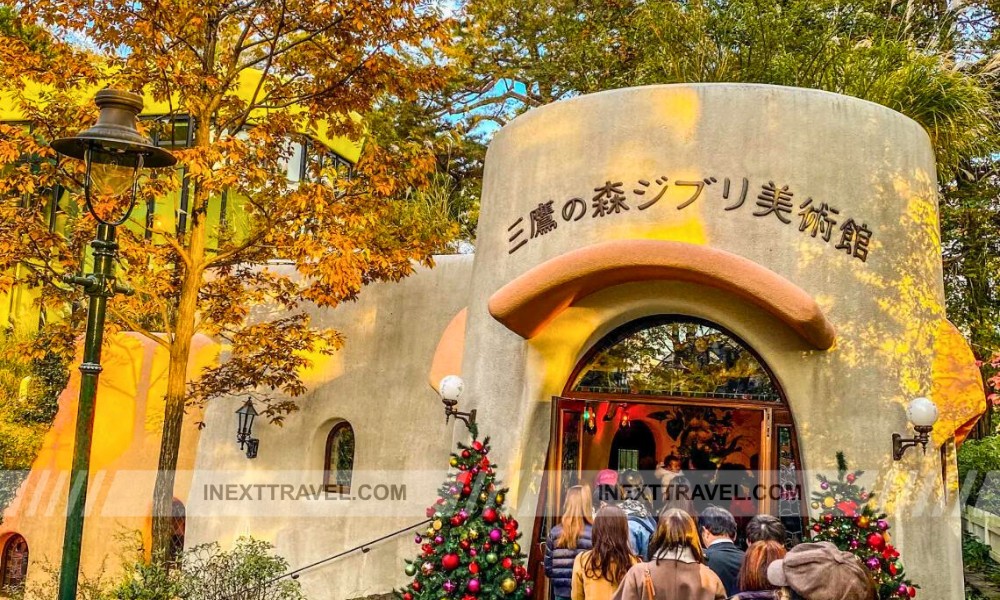
The Ghibli Museum is more than just a museum; it’s an immersive experience. Watch exclusive short films in the Saturn Theater, climb to the rooftop garden for stunning views, and enjoy a delicious meal at the Straw Hat Cafe, where the menu features dishes inspired by Ghibli films.
Whether you’re a lifelong fan of Studio Ghibli or a newcomer to its enchanting world, the Ghibli Museum is a must-visit destination. It’s a place where imagination comes to life, dreams take flight, and where the magic of storytelling knows no bounds.
Number 13: Nikko Toshogu Shrine.
Nestled amidst the lush cedar forests of Nikko, the Toshogu Shrine complex is a dazzling testament to Japan’s Edo-period artistry and religious devotion. Designated a UNESCO World Heritage Site, this sprawling complex is a treasure trove of ornate shrines, temples, and pagodas, each adorned with intricate carvings, vibrant colors, and lavish gold leaf.
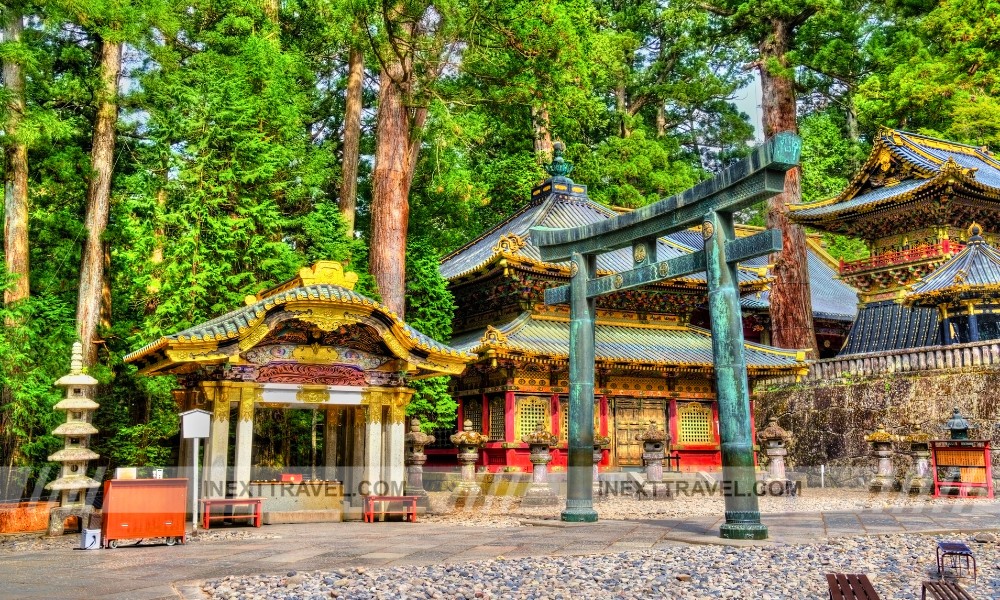
As you enter the complex, you’ll be greeted by the Yomeimon Gate, a masterpiece of intricate woodwork and vibrant colors considered one of Japan’s most beautiful gates. Pass through its threshold, and you’ll find yourself in a world of architectural splendor, where every surface is adorned with elaborate carvings of mythical creatures, historical figures, and natural motifs.
The complex’s centerpiece is the Toshogu Shrine, dedicated to the deified shogun Tokugawa Ieyasu. Its ornate main hall, with its gilded pillars, intricate paintings, and lacquered woodwork, is a sight to behold. As you explore the shrine’s various buildings, you’ll discover hidden treasures, such as the Sleeping Cat carving, a masterpiece of feline tranquility, and the famous “Three Wise Monkeys,” who embody the proverb “see no evil, hear no evil, speak no evil.”
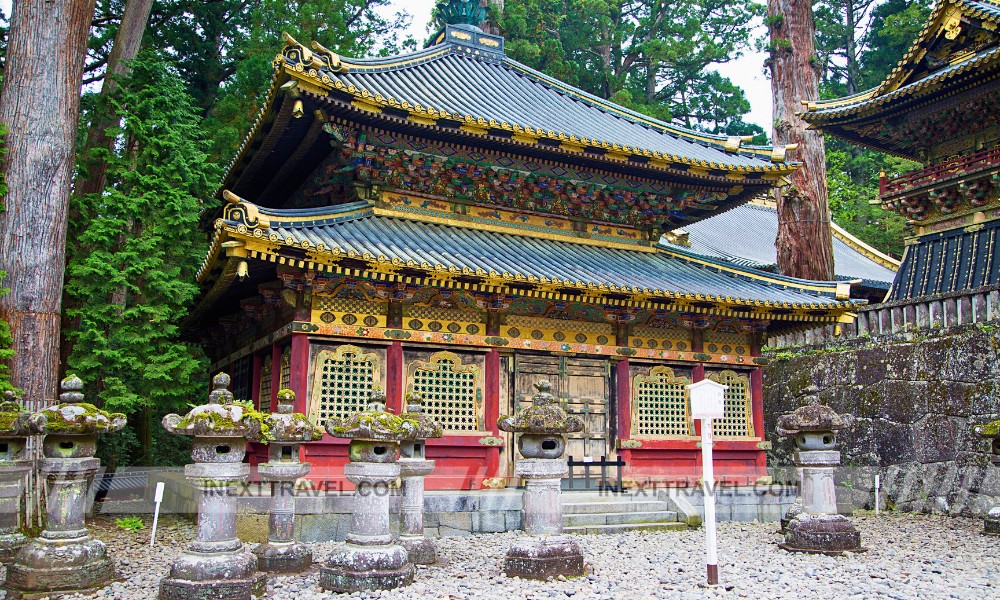
Beyond the Toshogu Shrine, the complex encompasses several other noteworthy structures, including the Rinno-ji Temple, with its three gilded Buddha statues, and the Futarasan Shrine, dedicated to the deities of Mount Nantai. Each building offers a unique glimpse into Japan’s rich religious and cultural heritage.
Whether you’re a history enthusiast, an architecture fan, or simply seeking a spiritual escape, Nikko Toshogu Shrine is a must-visit destination. Its intricate beauty, serene atmosphere, and rich symbolism will leave a lasting impression on all who wander through its hallowed grounds.
Number 12: Osaka Castle.
Osaka Castle, a majestic symbol of Japan’s rich history and cultural heritage, stands proudly as one of the country’s most iconic landmarks. With its imposing stone walls, towering main keep, and sprawling grounds, this castle complex offers a captivating glimpse into the grandeur and power of Japan’s feudal era.
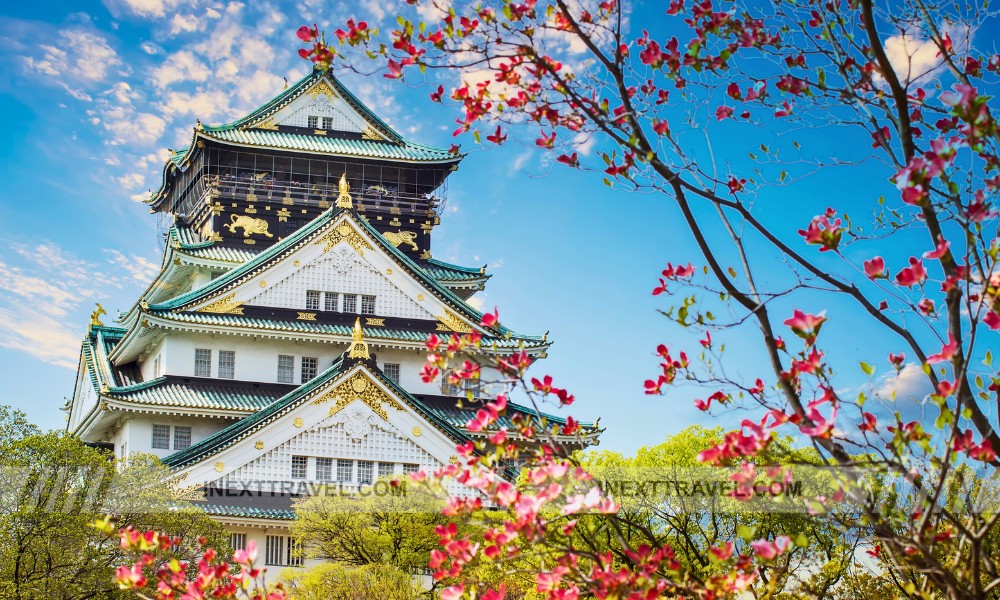
As you enter the castle grounds, you’ll be greeted by the sight of the impressive Otemon Gate, a massive structure guarded by stone statues of fierce warriors. Beyond the gate, a wide pathway leads you toward the main keep, an imposing five-story structure that dominates the skyline.
Inside the castle, a museum awaits, showcasing artifacts, documents, and exhibits that tell the fascinating story of Osaka Castle’s history. Learn about the castle’s role in Japan’s unification, the battles fought on its grounds, and the lives of the powerful warlords who once ruled from within its walls.
Ascend to the top of the main keep for breathtaking panoramic views of Osaka. From this vantage point, you can appreciate the castle’s strategic location and marvel at the city’s modern skyline juxtaposed against the backdrop of ancient architecture.

The castle grounds are a haven of tranquility, offering a peaceful escape from the bustling city. Stroll through the beautiful Nishinomaru Garden, where cherry blossoms bloom in spring, or relax by the tranquil moat surrounding the castle. During the warmer months, the park comes alive with festivals and events, adding a vibrant atmosphere to the historical setting.
Osaka Castle is not just a historical monument; it’s a living testament to Japan’s rich cultural heritage. Its impressive architecture, captivating history, and tranquil surroundings make it a must-visit destination for anyone exploring Japan.
Number 11: Kiyomizu-Dera Temple, Kyoto.
Prepare to be captivated by the iconic Kiyomizu-dera Temple, a UNESCO World Heritage Site symbolizing Kyoto’s rich cultural and spiritual heritage. Perched on a hillside overlooking the city, this ancient Buddhist temple is renowned for its remarkable wooden stage that juts out over a verdant valley, offering breathtaking panoramic views of Kyoto’s cityscape.
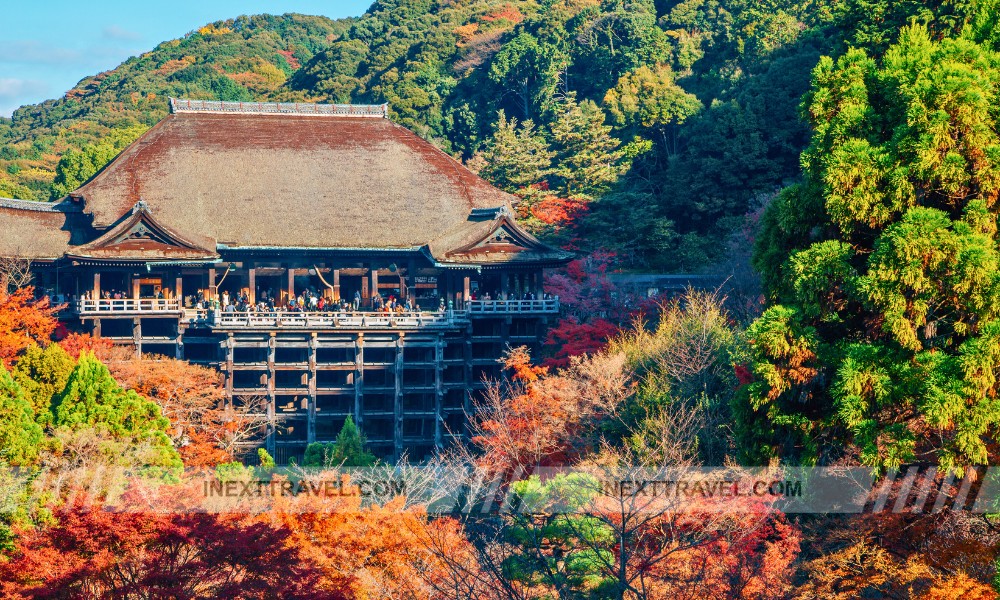
As you approach the temple, you’ll be greeted by the sight of its grand Nio-mon Gate, guarded by two fierce Nio statues. A winding path leads you through the temple complex, passing a three-story pagoda, a bell tower, and numerous smaller shrines and temples.
However, the true highlight of Kiyomizu-dera is its main hall, which features a massive wooden veranda supported by 139 towering pillars. This iconic structure, known as the “Stage of Kiyomizu,” is a marvel of engineering and craftsmanship, seemingly defying gravity as it extends over the hillside.
Step onto the stage, and you’ll be rewarded with spectacular vistas of Kyoto’s urban landscape, with its temples, shrines, and traditional wooden houses nestled among the surrounding hills. The view is particularly stunning during the cherry blossom season in spring and when the foliage transforms into vibrant hues of red and gold in autumn.

Beyond its architectural beauty, Dera is also a place of spiritual significance. The temple is dedicated to the bodhisattva Kannon, the goddess of compassion, who is said to grant wishes for love, health, and success. Visitors can drink from the Otowa Waterfall, believed to have healing properties, and offer prayers for good fortune.
Whether you’re seeking breathtaking views, spiritual enlightenment, or a glimpse into Kyoto’s rich cultural heritage, Kiyomizu-dera Temple is a must-visit destination that will leave you in awe of its beauty and tranquility.
Number 10: Todai-ji Temple, Nara.
Todai-ji Temple, nestled in the heart of Nara Park, is a testament to the grandeur of Buddhist architecture and spirituality in Japan. This UNESCO World Heritage Site boasts the distinction of housing one of the world’s most giant bronze Buddha statues, a sight that leaves visitors amazed by its sheer scale and serenity.
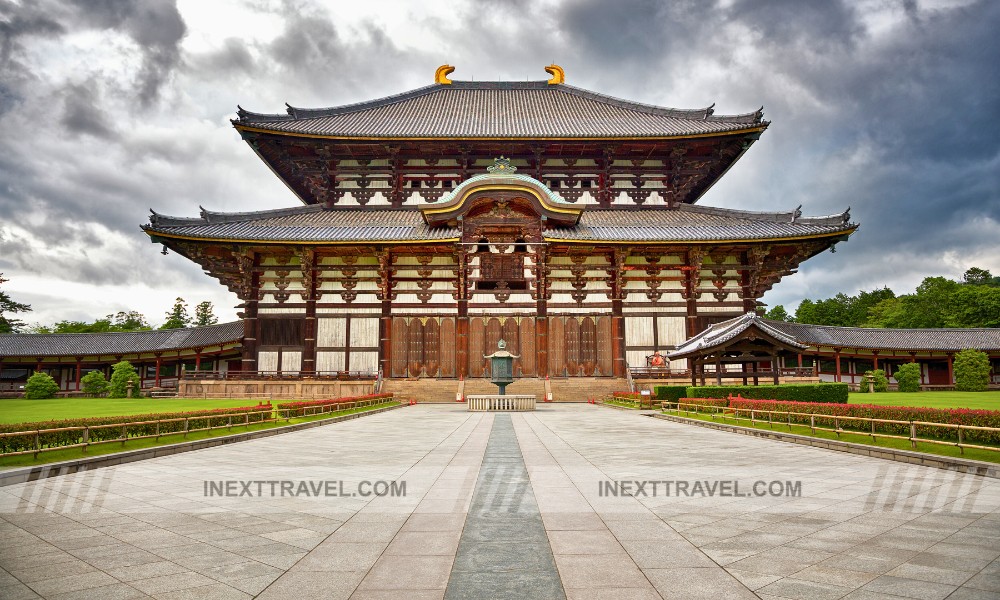
The Daibutsu-den, or Great Buddha Hall, is an architectural marvel in its own right. As the world’s largest wooden building, it houses the massive bronze statue of Vairocana Buddha, a symbol of enlightenment and compassion. The statue’s serene expression and imposing size evoke a sense of tranquility and reverence in those who gaze upon it.
But Todai-ji is more than just a single structure; it’s a sprawling complex of temples, halls, and pagodas, each with its unique history and significance. Explore the Nigatsudo Hall, known for its breathtaking views of Nara, or the Kaidanin Hall, which houses statues of the Four Heavenly Kings, guardians of the Buddhist faith.
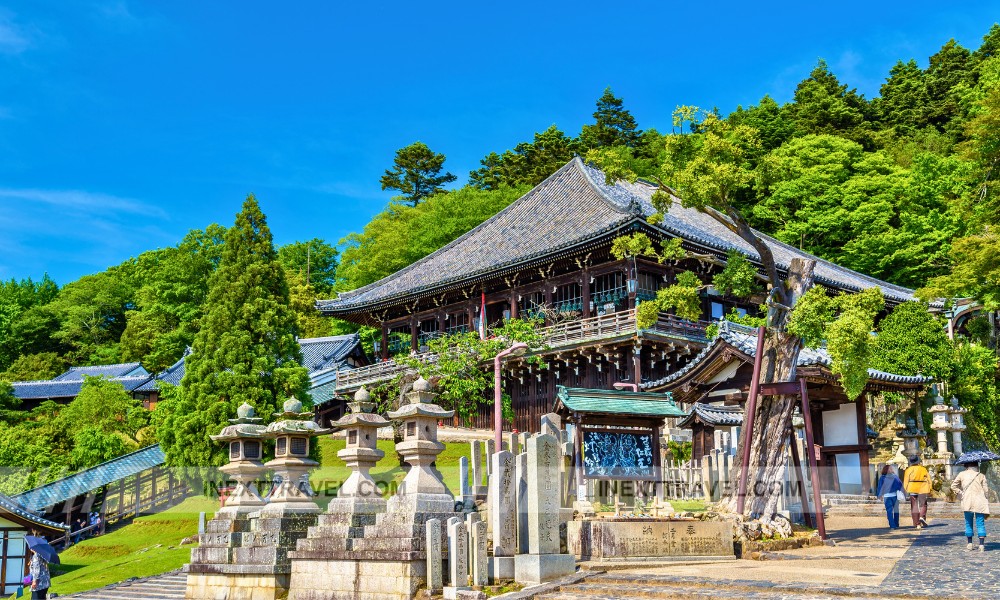
As you wander the temple grounds, you’ll encounter many cultural treasures, from ancient sculptures and paintings to ornate lanterns and ritual objects. The temple’s museum offers a deeper dive into its history and significance, showcasing artifacts and exhibits that trace the evolution of Buddhism in Japan.
Whether you’re a devout Buddhist, a history enthusiast, or simply seeking a peaceful retreat, Todai-ji Temple offers a unique and enriching experience. Its awe-inspiring architecture, serene atmosphere, and rich cultural heritage make it a must-visit destination for anyone exploring Nara.
Number 9: Koya-san.
Koya-san, a sacred mountain shrouded in ancient cedar forests, is a spiritual sanctuary unlike any other in Japan. This UNESCO World Heritage site is the center of Shingon Buddhism and home to over 100 temples, each a testament to this Buddhist sect’s profound history and devotion.
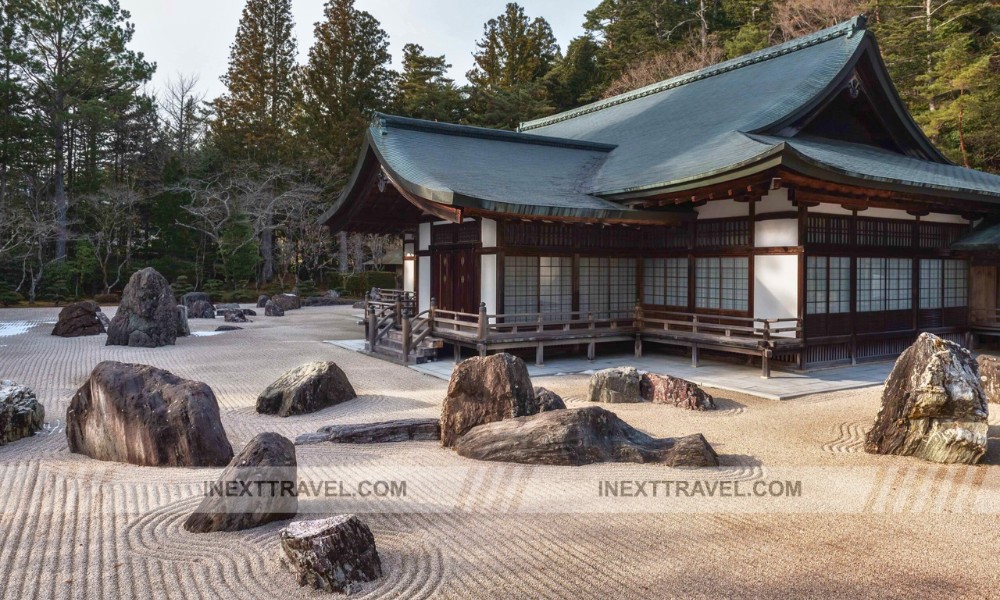
As you wander through the tranquil forest paths, you’ll encounter a myriad of temples, ranging from grand complexes with ornate pagodas to smaller, secluded retreats. Each temple exudes a unique atmosphere, inviting you to pause and reflect on the spiritual significance of this sacred place.
One of the most captivating aspects of Koya-san is Okunoin, a vast cemetery that winds through the forest. You’ll find thousands of moss-covered tombstones and statues here, creating an ethereal and otherworldly ambiance. Walking along the lantern-lit path, you’ll encounter the mausoleum of Kobo Daishi, the founder of Shingon Buddhism, a place of deep reverence and pilgrimage.
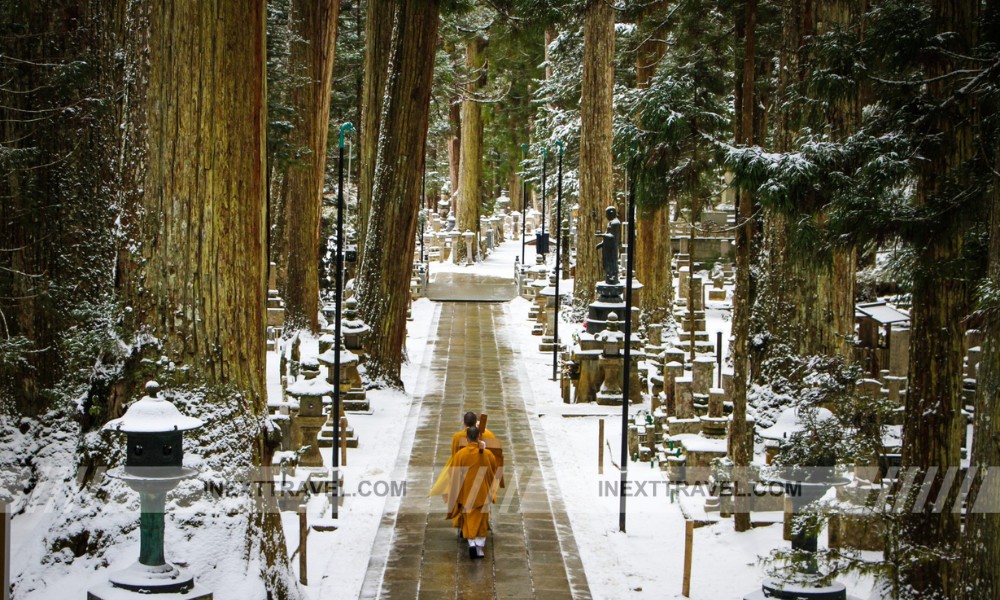
To truly immerse yourself in the spiritual atmosphere of Koya-san, consider spending a night in a temple lodging known as shukubo. These accommodations offer a unique cultural experience, where you can participate in morning prayers, savor traditional vegetarian cuisine, and experience the tranquility of monastic life.
Koya-san is a place of deep spiritual significance, historical richness, and natural beauty. Whether you’re seeking a peaceful retreat, a cultural immersion, or a glimpse into the heart of Japanese Buddhism, this sacred mountain will leave an enduring mark on your soul.
Number 8: Jigokudani Monkey Park.
Jigokudani Monkey Park, nestled in the snowy mountains of Nagano Prefecture, offers a unique and enchanting experience: the chance to observe wild Japanese macaques, also known as snow monkeys, in their natural habitat. These intelligent and playful primates have become famous for their love of bathing in the park’s natural hot springs, especially during the chilly winter months.

As you wander through the snowy forests surrounding the park, you’ll encounter these fascinating creatures going about their daily lives. Watch as they groom each other, play in the snow, and interact with their young. But the highlight of the visit is undoubtedly witnessing the snow monkeys soak in the steaming hot springs, their furry faces contorted in pure bliss. The sight of these monkeys relaxing in the warm water, surrounded by a snowy landscape, is surreal and heartwarming.
The Jigokudani Monkey Park was established in 1964 to protect the snow monkeys and their habitat. The park provides a haven for these fascinating creatures, allowing them to live and thrive in their natural environment. Visitors can observe the monkeys from a designated viewing area, ensuring a respectful and non-intrusive experience.

To reach Jigokudani Monkey Park, you can take a train to Yudanaka Station and then a bus or taxi to the park entrance. The park is open year-round, but the best time to visit is winter, when the snow monkeys are most active in the hot springs.
A visit to Jigokudani Monkey Park is a truly unforgettable experience. It’s a chance to witness the unique behavior of these intelligent creatures in their natural habitat and to appreciate the beauty and serenity of the Japanese Alps. Whether you’re a nature lover, a wildlife enthusiast, or simply seeking a memorable experience, this park will leave a lasting impression.
Number 7: Matsumoto Castle.
Matsumoto Castle, fondly known as the “Crow Castle” for its striking black exterior, is a treasure trove of history and architectural beauty. Unlike many Japanese castles perched on hilltops, it was built on flatland. Its unique design incorporates a complex system of moats, walls, and gatehouses for defense.

Its most distinctive feature is the imposing black and white five-story keep, adorned with intricate wooden details and elegant sloping roofs. This iconic structure, designated as a National Treasure of Japan, is one of the oldest surviving castles in the country and a testament to the craftsmanship of the feudal era.
Step inside the castle and embark on a journey through time. Climb the steep wooden stairs to reach the top floors, where you’ll be rewarded with panoramic views of the surrounding city and the majestic Japanese Alps. Explore the various rooms once inhabited by samurai lords and their families, and learn about the castle’s fascinating history through exhibits and displays.

Don’t miss the opportunity to walk along the castle’s covered corridors, where you’ll find hidden chambers, secret passages, and loopholes for archers to defend the fortress. The surrounding gardens are a peaceful oasis, offering a tranquil escape from the hustle and bustle of the city. In spring, the cherry blossoms create a breathtaking spectacle, transforming the castle grounds into a sea of pink and white.
Matsumoto Castle is not just a historical monument; it’s a symbol of Japanese resilience and cultural heritage. Its unique architecture, rich history, and picturesque setting make it a must-visit destination for anyone exploring Japan’s beautiful Nagano Prefecture.
Number 6: The Philosopher’s Path, Kyoto.
The Philosopher’s Path, or *Tetsugaku no Michi* in Japanese, is a serene and picturesque pathway that meanders along a tranquil canal in Kyoto. Lined with hundreds of cherry trees, this scenic route offers a peaceful escape from the city’s hustle and bustle, inviting you to stroll, reflect, and soak in the natural beauty surrounding you.

The path is especially enchanting during the cherry blossom season, typically from late March to early April. When the trees burst into bloom, creating a canopy of delicate pink blossoms, the air is filled with the sweet scent of flowers, and the gentle petals that fall like confetti create a magical atmosphere.
Even outside cherry blossom season, the Philosopher’s Path is a delightful place to wander. The canal’s calm waters reflect the surrounding greenery, creating a sense of tranquility and peace. Take your time to explore the small temples and shrines that dot the path, or sit on a bench and watch the world go by.

The path’s name is derived from Nishida Kitaro, a renowned Japanese philosopher who is said to have walked this route daily for meditation and contemplation. Whether you’re a philosopher or not, the path’s serene atmosphere will inspire reflection and introspection.
As you stroll along the Philosopher’s Path, you’ll be captivated by its timeless beauty and serene ambiance. It’s where you can slow down, reconnect with nature, and find peace in the heart of bustling Kyoto.
Number 5: The Island of Miyajima.
Miyajima, a sacred island in Hiroshima Bay, is a treasure trove of natural beauty, historical significance, and spiritual tranquility. Its most iconic landmark, the Itsukushima Shrine, is a UNESCO World Heritage site renowned for its stunning “floating” torii gate.

As you approach the island by ferry, the majestic torii gate emerges from the sea, seemingly suspended between water and sky. This iconic structure, painted a vibrant scarlet red, is a sight, especially at high tide when it blends effortlessly on the water.
Beyond the Torii gate, the Itsukushima Shrine awaits a complex of elegant buildings and walkways built over the water. Explore the shrine’s main hall, a masterpiece of traditional Japanese architecture, and marvel at the intricate carvings and colorful decorations. Stroll along the wooden walkways, admire the serene ponds, and feel a sense of peace and tranquility wash over you.
But Miyajima’s allure extends beyond the shrine. The island has several temples and shrines, each with unique charm and history. Hike up Mount Misen, the island’s highest peak, for panoramic views of the surrounding landscape. Explore Momijidani Park, renowned for its vibrant autumn foliage, or visit the Miyajima Public Aquarium to discover the diverse marine life of the Seto Inland Sea.
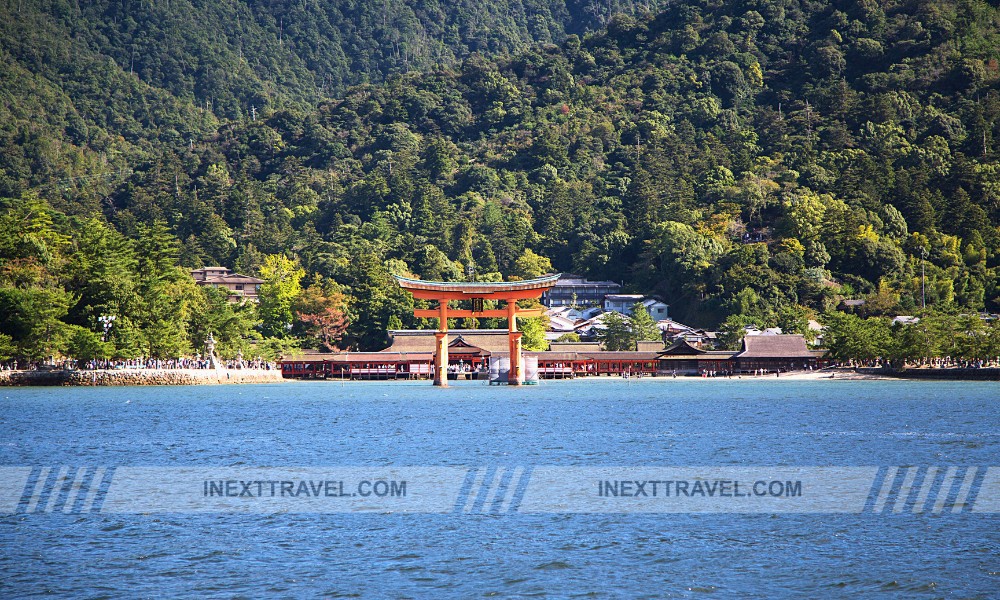
To taste local life, wander through the charming streets of Miyajima’s town, where you’ll find traditional shops selling souvenirs and regional delicacies. Indulge in fresh seafood at a waterfront restaurant, or sample the island’s famous maple leaf-shaped momiji manju pastries.
Miyajima is a destination that blends natural beauty, spiritual significance, and cultural richness. It’s a place where you can immerse yourself in the tranquility of nature, explore ancient temples and shrines, and experience the warmth and hospitality of the local people. Whether you’re seeking a spiritual retreat, a cultural immersion, or a peaceful escape, Miyajima is a destination that will leave a lasting impression on your heart and soul.
Number 4: The Historic Villages of Shirakawa-go and Gokayama.
Venture into the heart of Japan’s rural heritage with a visit to the enchanting historic villages of Shirakawa-go and Gokayama. Designated as UNESCO World Heritage sites, these picturesque villages are renowned for their unique gassho-style farmhouses, characterized by their steeply pitched thatched roofs that resemble hands clasped in prayer.
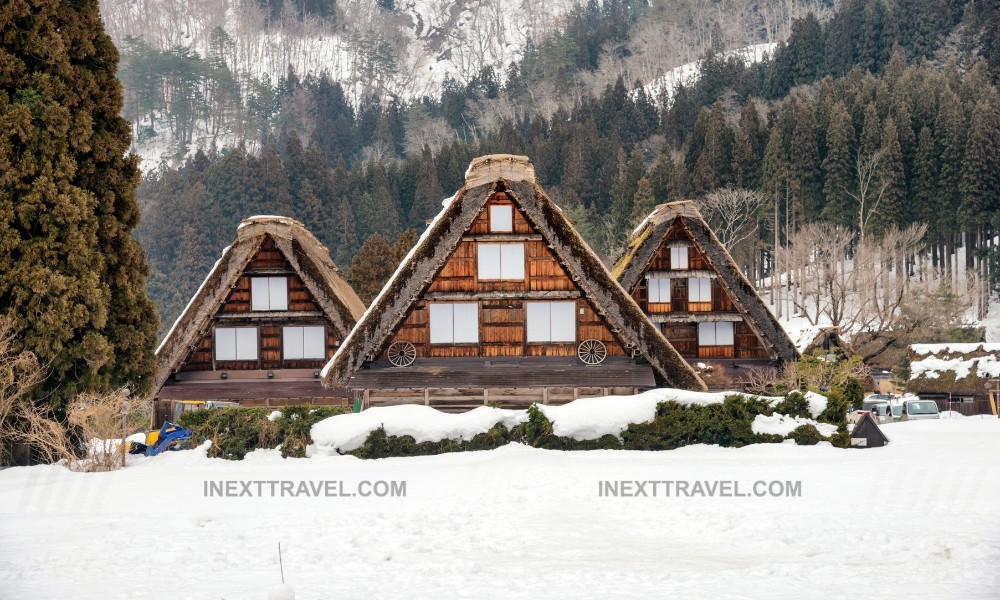
These architectural marvels were ingeniously designed to withstand the heavy snowfall that blankets the region during the winter months. The steep angles of the roofs allow snow to slide off easily, preventing the houses from collapsing under the weight. The thick thatched roofs also provide excellent insulation, keeping the interiors warm and cozy even in the harshest conditions.
Stroll through the narrow lanes of these villages, and you’ll feel transported back in time. The gassho-style farmhouses, some over 250 years old, exude a sense of history and tradition. Many of these houses are still inhabited by families who have passed down their traditions through generations.
While the villages are beautiful year-round, they indeed come alive in winter. The thatched roofs, covered in a thick blanket of snow, create a fairytale-like scene that is simply mesmerizing. The soft glow of lanterns illuminating the snowy landscape adds to the magical ambiance.
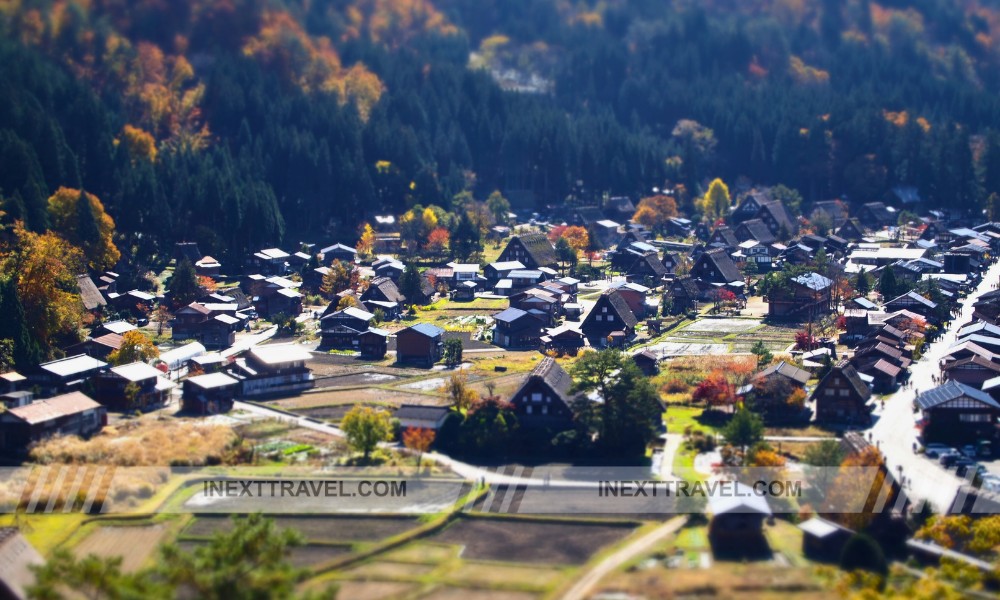
Shirakawa-go and Gokayama offer a glimpse into a way of life that has remained unchanged for centuries. Explore the interiors of the farmhouses, learn about the local customs and traditions, and savor traditional cuisine at one of the many restaurants and cafes. For a truly immersive experience, you can even spend a night in a gassho-style farmhouse.
Whether you’re a history buff, a nature lover, or simply seeking a peaceful retreat, the historic villages of Shirakawa-go and Gokayama are sure to captivate your heart and leave you with lasting memories of their unique charm and beauty.
Number 3: Mount Fuji.
Mount Fuji, an iconic symbol of Japan, is a majestic stratovolcano that stands as the nation’s highest peak and a UNESCO World Heritage Site. Its symmetrical cone, often capped with snow, has inspired artists, poets, and pilgrims for centuries. Whether you’re an avid hiker or simply seeking breathtaking views, Mount Fuji promises an unforgettable experience.
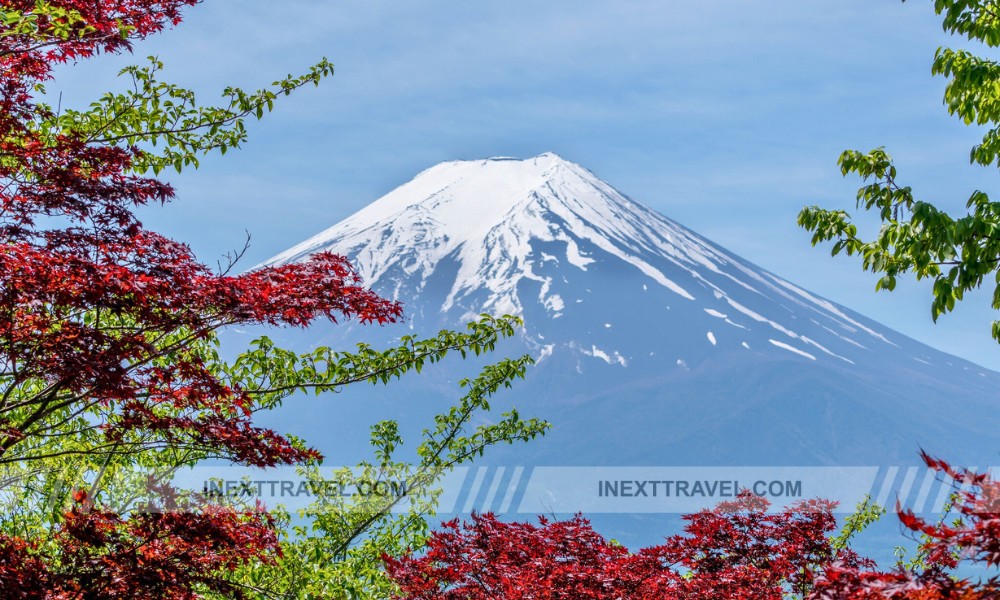
For adventure seekers, climbing to the summit is challenging yet rewarding. The official climbing season typically runs from July to September, when the weather is milder and the trails are accessible. There are several routes, each with unique challenges and scenery. The Yoshida Trail is the most popular route, offering rest stops and mountain huts. The climb can be strenuous, but the sense of accomplishment and the panoramic views from the summit are genuinely exhilarating.
Even if you’re not up for the climb, there are plenty of ways to enjoy Mount Fuji’s beauty. The Fuji Five Lakes region, located at the mountain’s base, offers stunning views of the peak reflected in the calm waters. Take a leisurely boat ride on Lake Kawaguchiko, visit the scenic Oshino Hakkai springs, or explore the Aokigahara Forest, known for its mystical atmosphere.
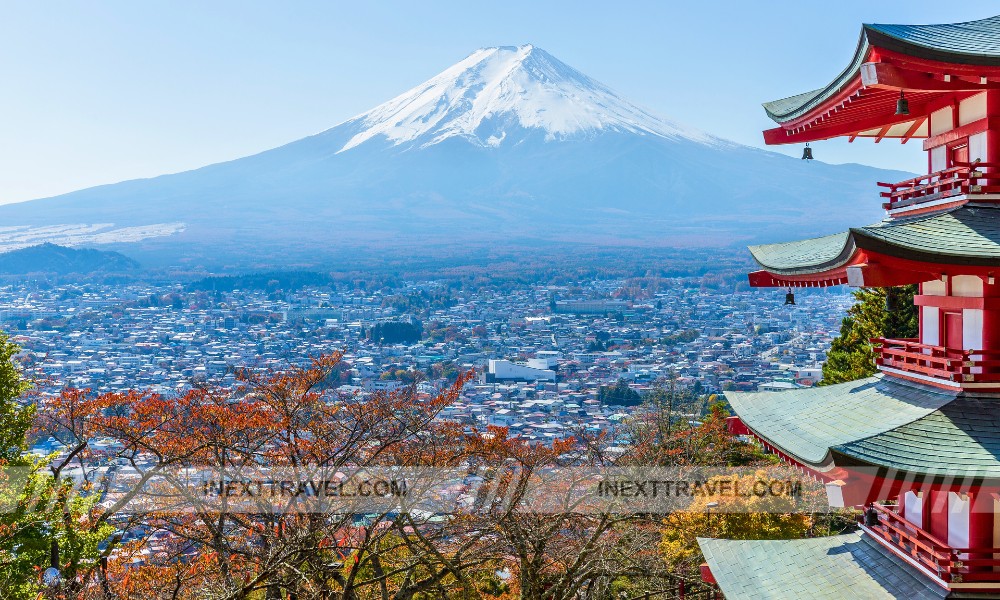
No matter how you experience it, Mount Fuji is a destination that will leave you in awe of its natural splendor and cultural significance. Its majestic presence and timeless beauty are a testament to the enduring power of nature and the human spirit.
Number 2: The Imperial Palace, Tokyo.
The Imperial Palace, nestled in Tokyo’s heart, is an enduring symbol of Japan’s rich history and imperial heritage. This sprawling complex, surrounded by moats and ancient stone walls, is the official residence of the Emperor of Japan and a place of deep cultural significance.

While the inner palace buildings are not accessible to the public year-round, the meticulously maintained East Gardens offer a serene escape and a glimpse into the grandeur. Wander through the tranquil gardens, where traditional Japanese landscaping techniques have created a harmonious blend of nature and artistry. Admire the meticulously pruned pine trees, the serene ponds filled with koi fish, and the picturesque bridges that arch over the water.
The gardens also house several historical structures, such as the Museum of the Imperial Collections, which showcases a remarkable collection of art and artifacts from the imperial family’s treasures.

Don’t miss the iconic Nijubashi Bridge, a double-arched stone bridge that spans the moat and offers a picture-perfect view of the palace’s imposing facade. Although access to the inner palace is limited, you can still admire its elegant architecture and traditional Japanese design from the exterior.
The Imperial Palace is a must-visit destination for anyone who understands and appreciates Japan’s rich history and cultural heritage. Even without access to the inner sanctum, the East Gardens and surrounding grounds offer a serene and captivating experience, allowing you to connect with the spirit of this ancient and revered institution.
Number 1: Kyoto.
Kyoto, the former imperial capital of Japan, is a city steeped in history, tradition, and breathtaking beauty. Often referred to as the cultural heart of Japan, Kyoto offers a captivating glimpse into the country’s rich heritage, with its myriad temples, shrines, traditional gardens, geisha districts, and historic streets.
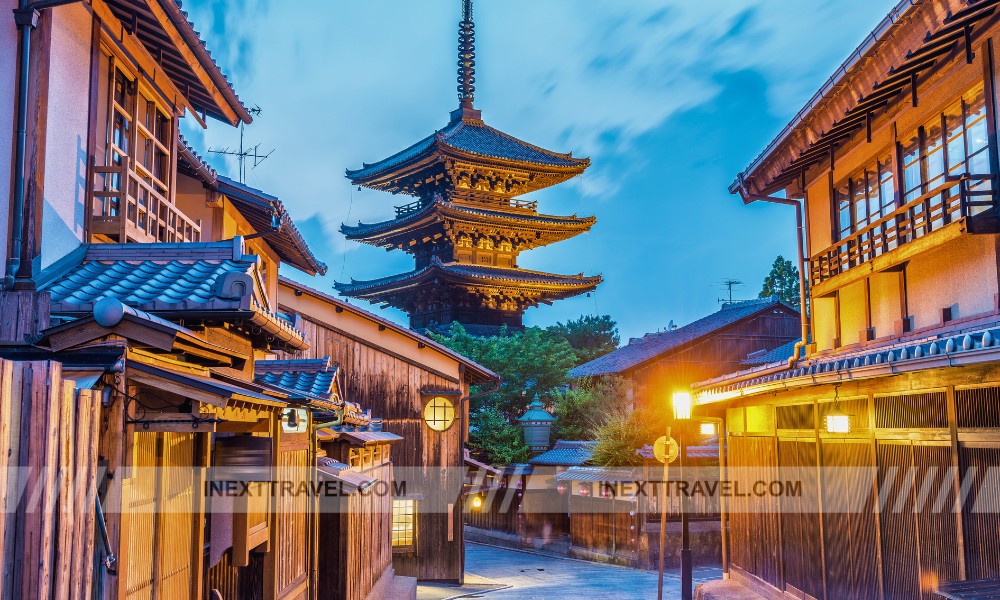
The city boasts an impressive collection of over 1,600 Buddhist temples and 400 Shinto shrines, each with a unique architectural style and spiritual significance. Explore the iconic Kinkaku-ji (Golden Pavilion), with its shimmering gold-leaf exterior, or the serene Ryoan-ji Temple, renowned for its Zen rock garden. Visit the Fushimi Inari-taisha Shrine, whose seemingly endless rows of vermilion torii gates, or the Kiyomizu-dera Temple, perched on a hillside offering stunning city views.
Kyoto’s gardens are equally enchanting, showcasing the art of Japanese landscaping at its finest. Stroll through the serene gardens of the Ginkaku-ji (Silver Pavilion) or the moss-covered grounds of Saiho-ji Temple (Kokedera). Admire the meticulously pruned trees, tranquil ponds, and carefully placed stones, each contributing to a harmonious and contemplative atmosphere.
To glimpse the world of geisha, wander through the Gion district, where you might catch a glimpse of these graceful entertainers in their elaborate kimono. Explore the narrow streets lined with traditional wooden machiya houses, visit the Yasaka Shrine, and immerse yourself in the enchanting atmosphere of this historic district.

Kyoto’s historic streets, such as Ninenzaka and Sannenzaka, offer a charming glimpse into the past. Lined with traditional shops, tea houses, and ryokan (Japanese-style inns), these streets evoke a sense of nostalgia and timeless beauty.
Kyoto is a city that will transport you to another time and place. Its timeless beauty, rich cultural heritage, and spiritual tranquility will leave a lasting impression on your heart and soul. Whether exploring ancient temples, strolling through serene gardens, or experiencing the enchanting geisha districts, Kyoto offers an immersive journey into the heart of Japanese history and tradition.
Conclusion
Japan’s allure is as diverse as its landscapes and as rich as its history.
Whether you find yourself captivated by the neon lights of Tokyo, the ancient temples of Kyoto, the serenity of a Zen garden, or the thrill of skiing down snowy slopes, Japan offers a wealth of experiences that cater to every traveler’s desires.
The 25 destinations we’ve explored in this post are just a starting point, as countless more hidden gems await discovery.
So, pack your bags, embrace the spirit of adventure, and allow yourself to be enchanted by the wonders that await you in the Land of the Rising Sun.
Your journey through Japan will undoubtedly be filled with unforgettable memories and a newfound appreciation for this extraordinary country’s unique blend of tradition, modernity, and natural beauty.